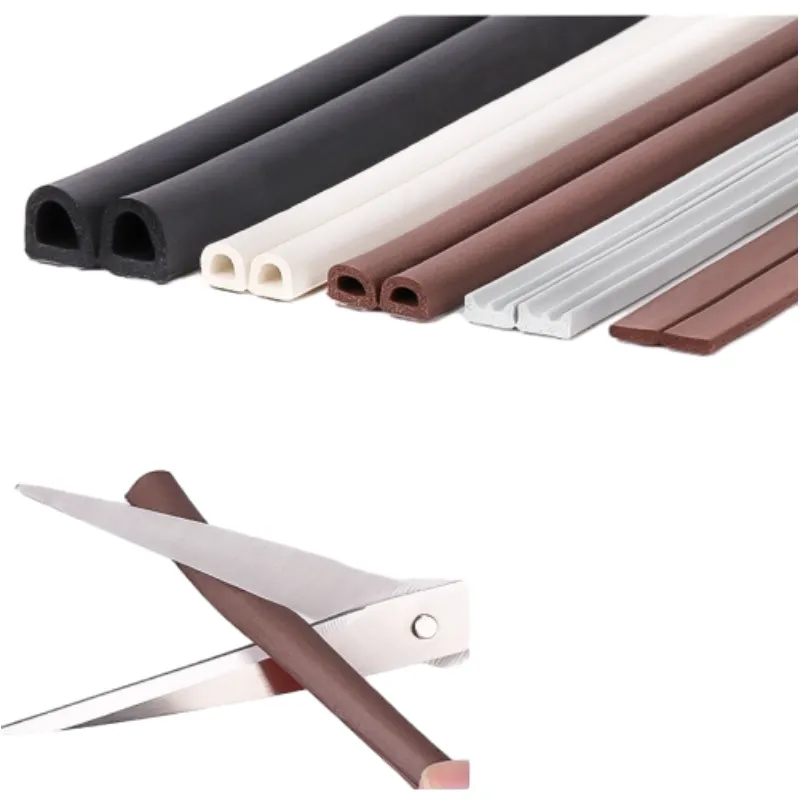High-Quality Rubber Gasket Seals for Doors to Enhance Insulation and Durability
The Importance of Door Rubber Gasket Seals
In the world of construction and home improvement, the small details can often make a significant impact on the overall functionality and aesthetics of a space. One such detail that deserves attention is the door rubber gasket seal. These seals, often overlooked, play a crucial role in enhancing the performance of doors while also contributing to energy efficiency and comfort within buildings.
What is a Door Rubber Gasket Seal?
A door rubber gasket seal is a flexible rubber or foam material applied along the perimeter of a door frame. Its primary function is to create a tight seal between the door and the frame, preventing air, moisture, dust, and pests from entering the space. This sealing mechanism is not only vital for maintaining indoor climate control but also for protecting the interior from external elements.
Energy Efficiency
One of the most significant benefits of installing a door rubber gasket seal is its potential to improve energy efficiency. Inefficient seals around doors can lead to significant heating and cooling losses. According to the U.S. Department of Energy, as much as 30% of a home's energy can be lost through poorly sealed doors and windows. By providing a proper seal, these gaskets reduce air leakage, which, in turn, can lower energy bills and reduce the workload on HVAC systems. This is particularly important in regions with extreme temperatures, where heating and cooling costs can be a significant part of a household budget.
Indoor Comfort
In addition to energy savings, door rubber gasket seals contribute to overall indoor comfort. By minimizing drafts and fluctuations in temperature, these seals create a more consistent climate within a space. This is especially beneficial in homes and offices where people spend significant amounts of time. A drafty door can cause discomfort, leading to a less pleasant living or working environment. With the proper sealing, the inside remains cozy and stable, enhancing the quality of life for occupants.
door rubber gasket seal

Noise Reduction
Another key advantage of door rubber gasket seals is their ability to reduce noise transmission. For individuals living in busy urban areas or near loud environments, external noise can be a major source of irritation. The rubber gasket acts as a barrier that dampens sound waves, making it easier to maintain a peaceful and quiet indoor environment. This feature is particularly beneficial in settings such as home offices, studios, and bedrooms.
Protection from the Elements
Moreover, door rubber gasket seals provide excellent protection against the elements. They help to keep moisture at bay, preventing rainwater and humidity from seeping into interiors, which can lead to mold and structural damage. Additionally, these seals act as a deterrent against pests, such as insects and rodents, that might try to invade through the gaps around doors.
Easy Installation and Maintenance
Another appealing aspect of door rubber gasket seals is their ease of installation and maintenance. Most seals can be easily cut to fit the specific dimensions of a door and can be attached using adhesive or self-stick backing. This makes it a straightforward DIY project for homeowners looking to enhance their properties. Furthermore, rubber and foam materials are typically resistant to wear and tear, requiring minimal maintenance to ensure continued effectiveness.
Conclusion
In conclusion, door rubber gasket seals are an often-overlooked component that can significantly enhance the functionality, comfort, and efficiency of homes and commercial spaces. By reducing air leakage, enhancing energy efficiency, minimizing noise, and providing protection from the elements, these seals contribute to a better quality of life for occupants. Investing in high-quality door rubber gasket seals is not just a minor improvement; it's a smart and practical decision that promises long-term benefits. Whether during a new construction project or as part of a home renovation, considering these seals is a step toward a more comfortable and energy-efficient environment.
-
Under Door Draught Stopper: Essential ProtectionNewsJul.31,2025
-
Garage Door Seal and Weatherstrips for ProtectionNewsJul.31,2025
-
Edge Banding Tape for Perfect EdgesNewsJul.31,2025
-
Table Corner Guards and Wall Corner ProtectorsNewsJul.31,2025
-
Stair Nose Edging Trim and Tile Stair SolutionsNewsJul.31,2025
-
Truck Bed Rubber Mats for Pickup BedsNewsJul.31,2025
-
Window Weather Stripping for Noise ReductionNewsJul.29,2025